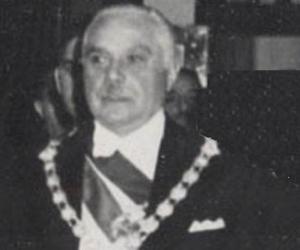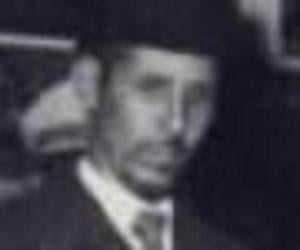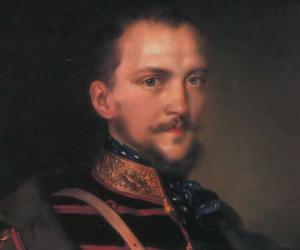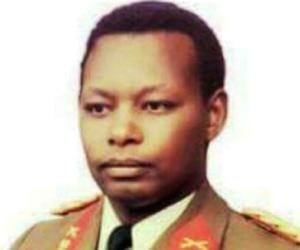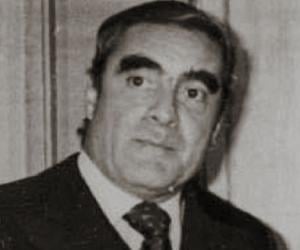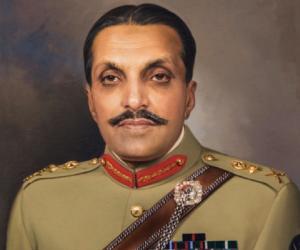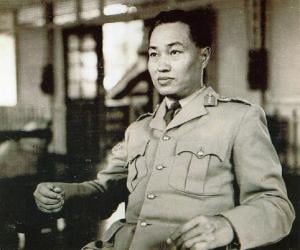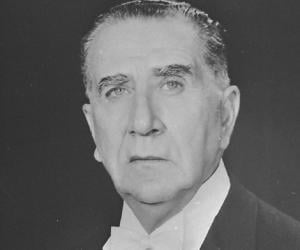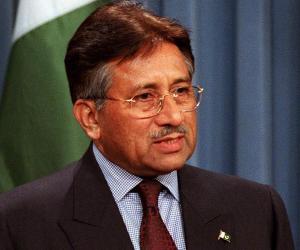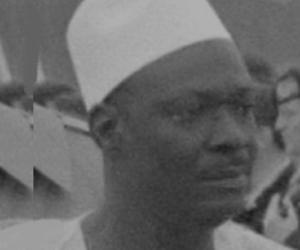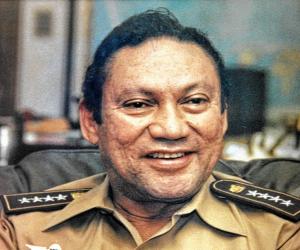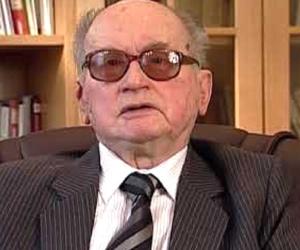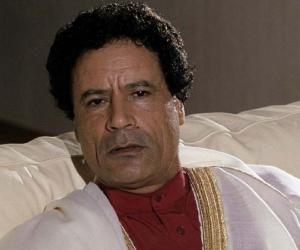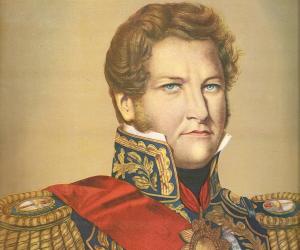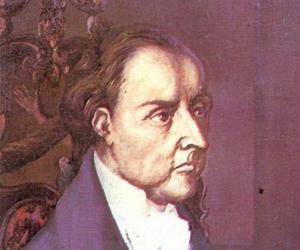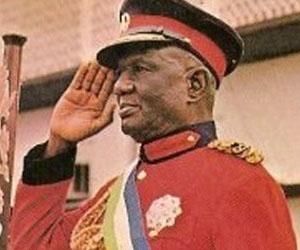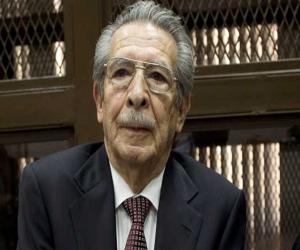Rafael Leónidas Trujillo Molina was a Dominican politician, soldier, and authoritarian ruler. His nickname was “El Jefe,” meaning “The Chief” or “The Boss” in Spanish. He held power in the Dominican Republic from February 1930 until May 1961, when he was assassinated. Trujillo first became president in 1930 and again in 1942; however, even when not officially in office, he maintained supreme authority over the state. The Trujillo Era is considered one of the darkest periods in Dominican history, marked by rampant bloodshed, brutality, and disregard for fundamental human rights.
His government orchestrated the mass murder of nearly 20,000 Haitians in what is known as the Parsley Massacre. Trujillo was also involved in various assassination attempts and other crimes that soon made him notorious beyond the Dominican Republic’s borders. His involvement extended to the attempted assassination of Venezuelan President Rómulo Betancourt in 1960, the kidnapping and disappearance of Jesús Galíndez in 1956, and the murder of writer José Almoina. His regime influenced the political climate in the Hispanic Caribbean, which saw the rise and fall of dictatorships in neighboring countries, such as Cuba, Nicaragua, Guatemala, El Salvador, Honduras, Venezuela, and Haiti.
Quick Facts
Also Known As: Rafael Trujillo, El Jefe
Died At Age: 69
Family:
Spouse/Ex-: María de los Ángeles Martínez y Alba (m. 1937), Aminta Ledesma y Pérez (m. 1913 – div. 1925), Bienvenida Ricardo y Martínez (m. 1927 – div. 1935)
father: José Trujillo Valdez
mother: Altagracia Julia Molina Chevalier
children: Angelita Trujillo, Flor de Oro Trujillo Ledesma, Genoveva Trujillo, Leonidas Rhadamés Trujillo Martínez, María de los Angeles del Sagrado Corazón de Jesus, Odette Trujillo Ricardo, Rafael Trujillo, Ramfis Trujillo, Yolanda Trujillo
Born Country: Dominican Republic
Dictators Presidents
Died on: May 30, 1961
place of death: Trujillo City, Dominican Republic
Cause of Death: Assassination
Childhood & Early Life
Born Rafael Leonidas Trujillo Molina, on October 24, 1891, in San Cristóbal in the Dominican Republic, he was the third of the 11 children born to José Trujillo Valdez and Altagracia Julia Molina Chevalier.
His father was the son of a Spanish sergeant who had served in the Dominican Republic during the annexation era. His mother, Altagracia Julia Molina Chevalier, was also known as “Mama Julia.” His parents were of French, Haitian, and Dominican origin.
Trujillo began his education at the Juan Hilario Meriño School in 1897, at the age of six. A year later, he transferred to Broughton School, where he studied under the guidance of educator Eugenio María de Hostos, completing his primary education there.
At 16, he took a job as a telegraph operator, which he held for three years. However, he later became involved in criminal activities, including cattle theft, check forgery, and postal robbery. Following his arrest, he spent several months in jail. After his release, he reportedly formed a violent gang known as “The 42.”
Career
The US occupied the Dominican Republic in 1916 and established a Dominican force to maintain order. Trujillo joined the ‘National Guard’ in 1918 and trained with the US marines. In only 9 years, he quickly rose through the military ranks, from cadet to general and then to commander-in-chief.
In 1930, when a rebellion occurred in Santiago against the then-president, Horacio Vásquez, Trujillo colluded with rebel leader Rafael Estrella Ureña to ensure Estrella could assume power and he himself could run for the presidency.
As agreed upon, Estrella became the acting president on March 3, while Trujillo became the head of the army and the police. He also became the presidential candidate for the ‘Patriotic Coalition of Citizens,’ alongside Estrella. Other nominees were subjected to harassment by the military.
The army hindered anyone who campaigned, leading to almost a unanimous victory for Trujillo in the presidential elections. The election was a farce. Some said the number of votes he received was more than that of the actual voters.
Soon after his inauguration, Hurricane San Zenón devastated Santo Domingo, killing around 2,000 people. Trujillo declared martial law and began rebuilding the city, renaming it “Ciudad Trujillo” (“Trujillo City”) in his honor, erecting monuments and renaming streets to glorify himself.
He established a one-party state and promoted himself to “Generalissimo” of the army. By 1934, he stood for re-election as the sole candidate, with elections under his regime often being rigged.
The persecution of dissenters with force and brutality was the order of the day in Trujillo’s regime. He also had a list of people who he thought were his enemies and were thus supposed to be executed.
He had a particular unit, the ‘Servicio de Inteligencia Militar,’ which carried out killings and imprisonments. Some of his more infamous cases, such as the Galíndez case and the murder of the Mirabal sisters, led to critical scrutiny by the international community.
By the time Trujillo took over the northwest border of the Dominican Republic, it had become extremely “Haitianized.” The border was not demarcated, and he met President Sténio Vincent to agree on a settlement.
He schemed against the Haitian government with General Calixte. When further incursions occurred, he commenced the Parsley Massacre.
The Parsley Massacre, also known as “La Masacre del Perejil” in Spanish, was executed in 1937 by Trujillo. He claimed Haiti was harboring his Dominican opponents and commanded an assault on tens of thousands of Haitians in the border areas.
The real number is unknown, but it is claimed that around 20,000 to 30,000 people were killed. They used machetes and also drowned them in the port of Montecristi.
The Haitian government ultimately called for international inspection and paid a restitution of US$525,000 in 1939, which amounted to US$30 per victim, while only 2 cents were given to the survivors, because of corruption.
Family & Personal Life
Trujillo’s love for power and dominance also defined many aspects of his day-to-day life. He developed an everyday routine, which included waking up at 4:00 a.m. to exercise, read the newspaper, and read reports, all of which he did before breakfast.
He was in office by 9:00 a.m. and worked until 7:30 p.m., with only one break at noon. After dinner, he held discussions, participated in events, or was often driven around in secret so that he could observe and remember.
He, along with his family, had accumulated vast amounts of wealth by dominating many industries, such as the meat and milk production, salt, sugar, tobacco, lumber, and lottery industries.
Trujillo gave his family members positions within the government and the army. He made one of his sons a colonel in the Dominican military when he was only 4 years old.
His annual income was US$1.5 million at the time of his death.
He had no real friends, only associates and acquaintances. His associates considered him unpredictable.
He had a passion for exquisite and ostentatious clothing and had a collection of 2,000 elaborate uniforms and suits.
Although Trujillo was married thrice, he kept mistresses to fulfill his unbridled sexual appetite.
He married Aminta Ledesma Lachapelle, his first wife, on August 13, 1913. He later married Bienvenida Ricardo Martínez on March 30, 1927. It is believed that he had a daughter named Odette Trujillo Ricardo with Bienvenida.
In 1935, he divorced Bienvenida and married María de los Angeles Martínez Alba.
Trujillo and María had three children: Rafael Leónidas Ramfis, María de los Ángeles Del Sagrado Corazón de Jesús, and Leónidas Rhadamés.
He had two other children, with Lina Lovatón Pittaluga, who was an upper-class debutante. Their names were Yolanda and Rafael.
He was a healthy man but eventually developed chronic lower urinary infections and prostate problems.
On May 30, 1961, Trujillo was assassinated when his blue Chevrolet Bel Air was ambushed on a road outside the Dominican capital.
Facts About Rafael Leónidas Trujillo Molina
Rafael Leónidas Trujillo Molina was known for his extravagant sense of style and often wore colorful uniforms and elaborate military regalia.
Trujillo was a skilled marksman and enjoyed hunting as a hobby.
He was particularly fond of bird hunting.
Despite his reputation as a dictator, Trujillo had a passion for baseball and even owned his own team, the Ciudad Trujillo Dragons.
Trujillo was a well-known lover of luxury cars and owned a vast collection of expensive vehicles, which he often showcased in parades and public events.
Trujillo had a keen interest in the arts and supported many artists and musicians during his rule, promoting cultural events and initiatives throughout the Dominican Republic.


